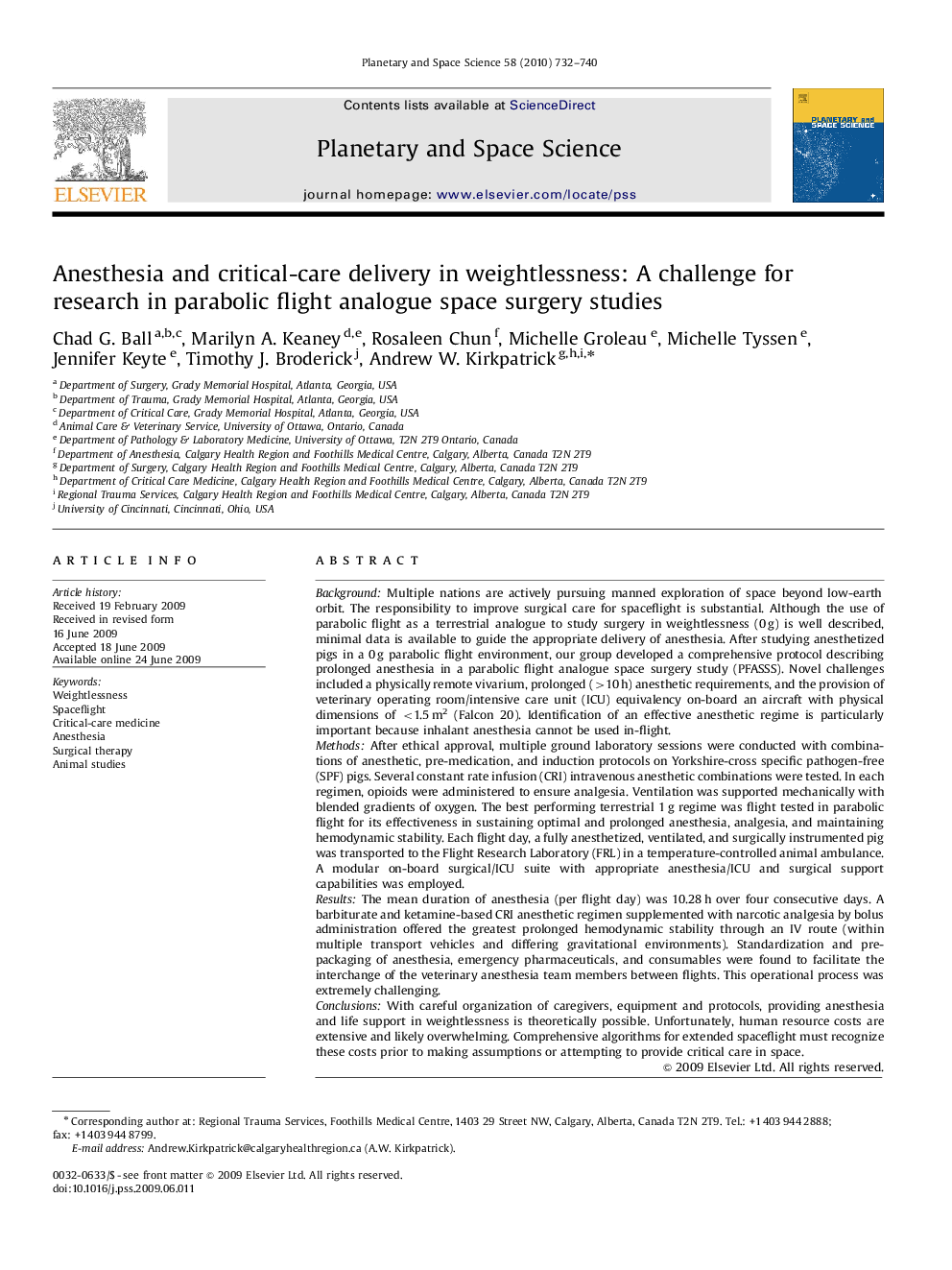| کد مقاله | کد نشریه | سال انتشار | مقاله انگلیسی | نسخه تمام متن |
|---|---|---|---|---|
| 1782007 | 1022313 | 2010 | 9 صفحه PDF | دانلود رایگان |

BackgroundMultiple nations are actively pursuing manned exploration of space beyond low-earth orbit. The responsibility to improve surgical care for spaceflight is substantial. Although the use of parabolic flight as a terrestrial analogue to study surgery in weightlessness (0 g) is well described, minimal data is available to guide the appropriate delivery of anesthesia. After studying anesthetized pigs in a 0 g parabolic flight environment, our group developed a comprehensive protocol describing prolonged anesthesia in a parabolic flight analogue space surgery study (PFASSS). Novel challenges included a physically remote vivarium, prolonged (>10 h) anesthetic requirements, and the provision of veterinary operating room/intensive care unit (ICU) equivalency on-board an aircraft with physical dimensions of <1.5 m2 (Falcon 20). Identification of an effective anesthetic regime is particularly important because inhalant anesthesia cannot be used in-flight.MethodsAfter ethical approval, multiple ground laboratory sessions were conducted with combinations of anesthetic, pre-medication, and induction protocols on Yorkshire-cross specific pathogen-free (SPF) pigs. Several constant rate infusion (CRI) intravenous anesthetic combinations were tested. In each regimen, opioids were administered to ensure analgesia. Ventilation was supported mechanically with blended gradients of oxygen. The best performing terrestrial 1 g regime was flight tested in parabolic flight for its effectiveness in sustaining optimal and prolonged anesthesia, analgesia, and maintaining hemodynamic stability. Each flight day, a fully anesthetized, ventilated, and surgically instrumented pig was transported to the Flight Research Laboratory (FRL) in a temperature-controlled animal ambulance. A modular on-board surgical/ICU suite with appropriate anesthesia/ICU and surgical support capabilities was employed.ResultsThe mean duration of anesthesia (per flight day) was 10.28 h over four consecutive days. A barbiturate and ketamine-based CRI anesthetic regimen supplemented with narcotic analgesia by bolus administration offered the greatest prolonged hemodynamic stability through an IV route (within multiple transport vehicles and differing gravitational environments). Standardization and pre-packaging of anesthesia, emergency pharmaceuticals, and consumables were found to facilitate the interchange of the veterinary anesthesia team members between flights. This operational process was extremely challenging.ConclusionsWith careful organization of caregivers, equipment and protocols, providing anesthesia and life support in weightlessness is theoretically possible. Unfortunately, human resource costs are extensive and likely overwhelming. Comprehensive algorithms for extended spaceflight must recognize these costs prior to making assumptions or attempting to provide critical care in space.
Journal: Planetary and Space Science - Volume 58, Issue 4, March 2010, Pages 732–740